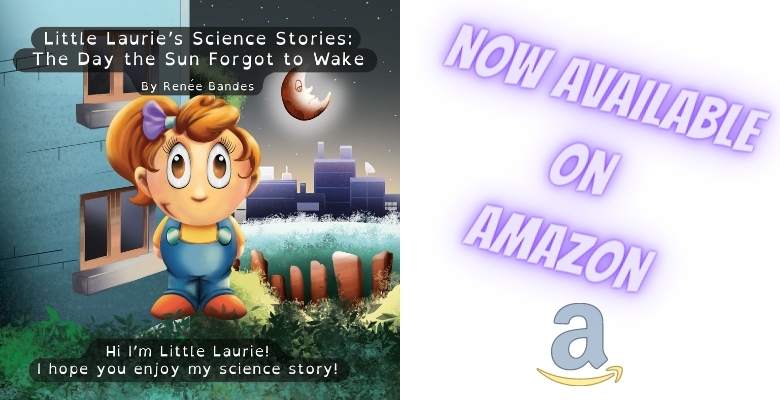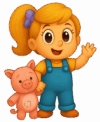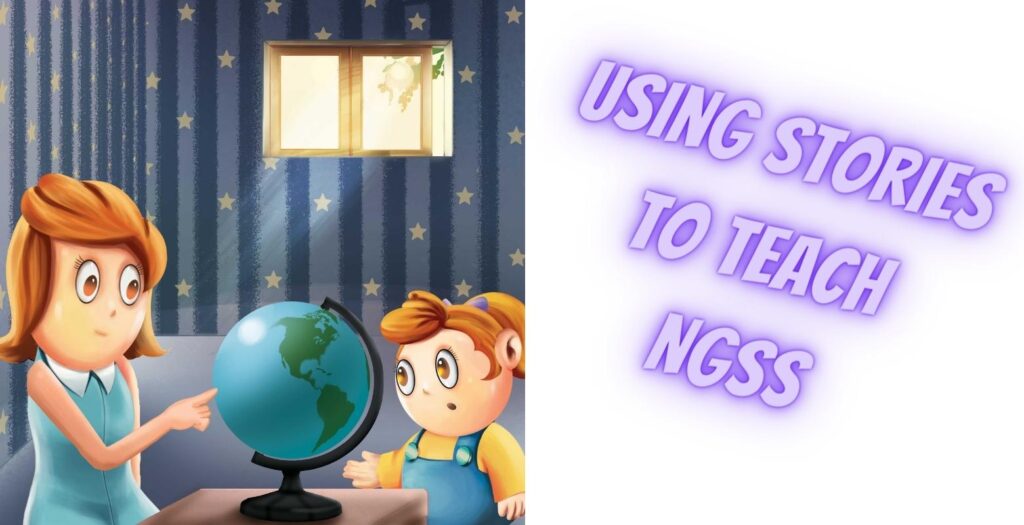Engaging Children in Science: How Little Laurie’s Science Stories and Relatable Characters Help Teach the Next Generation Science Standards
Science education is an essential part of elementary and early childhood education, and the Next Generation Science Standards (NGSS) are a set of standards designed to provide K-12 students in the United States with a more comprehensive and integrated understanding of science. The standards emphasize the importance of connecting core disciplinary ideas, science and engineering practices, and cross-cutting concepts to help students develop a deeper understanding of science and its application to the real world. One effective way to teach science to kids and help them engage with the NGSS is through the use of engaging and relatable stories that incorporate scientific concepts.
Understanding the Next Generation Science Standards
The NGSS are a set of science education standards developed by a consortium of states, education organizations, and educators. The standards provide a framework for K-12 science education that is based on three dimensions: disciplinary core ideas, science and engineering practices, and cross-cutting concepts. The disciplinary core ideas are the key concepts and principles that define each scientific discipline, while the science and engineering practices are the skills and processes that scientists and engineers use to investigate the natural world. The cross-cutting concepts are the ideas that apply across all scientific disciplines, such as patterns, cause and effect, and systems and models.
Examples of Science Topics and Lessons That Align with Specific NGSS Standards
The NGSS cover a wide range of science topics, from life sciences to physical sciences to earth and space sciences. For example, one NGSS standard for kindergarten requires students to understand the concept of patterns, including the patterns of the sun and moon in the sky. A lesson aligned with this standard might involve observing the position of the sun and moon at different times of day and discussing the patterns that emerge. Another NGSS standard for fourth grade requires students to understand the water cycle and the ways in which water is used and transported in the natural world. A lesson aligned with this standard might involve exploring the different stages of the water cycle and the ways in which water is used in human society.
Why Cross-Cutting is Important (With a Specific Example of How It Might Be Used)
The NGSS incorporate cross-cutting concepts that connect different areas of science and help students develop a deeper understanding of the interconnectedness of scientific ideas. These cross-cutting concepts include patterns, cause and effect, systems and models, and energy and matter. By incorporating these concepts into lessons and stories, educators can help children see how scientific concepts are interconnected and relevant to their own lives.
For example, a lesson about weather patterns might incorporate cross-cutting concepts like cause and effect, systems and models, and patterns. Students might learn about the ways in which different weather patterns are connected and how changes in one part of the system can have an impact on the entire system.
Using Little Laurie’s Science Stories as a Resource
The Little Laurie’s Science Stories book series effectively combines engaging stories, scientific concepts, and relatable characters. The series features a young girl named Laurie who explores the world around her and discovers the wonders of science.
Each book in the series focuses on a different scientific concept, such as energy, motion, or life cycles, and incorporates cross-cutting concepts like patterns and cause and effect. The stories are designed to capture children’s imaginations and help them develop a deeper understanding of scientific concepts in a fun and relatable way.
The books are designed to be read aloud to young children, making them accessible to kids who are not yet able to read on their own, or explored more independently by 2nd and 3rd-grade readers. The engaging stories and relatable characters help make science more approachable and interesting for young readers, encouraging them to explore the world around them and ask questions about the natural world.
How Relatable Characters Break Down Barriers to STEM
Representation matters in science education, and featuring relatable characters from diverse backgrounds can help break down barriers to entry in STEM fields. Little Laurie’s Science Stories features a diverse cast of characters, including girls and boys from different racial and ethnic backgrounds. This diversity helps promote greater representation in science-related fields, encourages children to see themselves as capable of pursuing careers in STEM, and helps break down stereotypes about who can excel in science and technology.
Using Little Laurie’s Science Stories as a Resource for Teachers, Homeschoolers, and Parents
Parents, homeschoolers, and teachers can use Little Laurie’s Science Stories as a resource for teaching science to children. The stories and scientific concepts are aligned with the NGSS, providing a comprehensive and integrated approach to science education. The books can be used as a jumping-off point for further discussion and exploration, with parents and teachers encouraging children to ask questions and make connections between the stories and their own experiences.
For teachers, Little Laurie’s Science Stories can be used to introduce scientific concepts and cross-cutting concepts in a fun and engaging way. The books can be used to spark discussion and encourage critical thinking, and can be used as part of a larger unit on a particular scientific topic. Suggestions for specific, related NGSS standards are included as an aid to teachers.
For homeschoolers, Little Laurie’s Science Stories can be used to supplement existing science curricula, providing an engaging and fun way to introduce new scientific concepts to children. The books can be used to encourage discussion and exploration, and can help children develop a love of learning and an appreciation for the natural world.
For parents, Little Laurie’s Science Stories can be used to spark children’s curiosity and interest in science. The books can be read aloud to children and used as a starting point for further exploration and investigation.
Little Laurie’s Science Stories is committed to making science education accessible to all children, including those with dyslexia. The books are printed in the Open Dyslexic font, which is specifically designed to make reading easier for people with dyslexia. The font uses a unique design that helps differentiate between similar letters and reduces the likelihood of letters flipping or rotating in a reader’s mind. By using the Open Dyslexic font, Little Laurie’s Science Stories helps ensure that children with dyslexia can engage with the stories and scientific concepts on an equal footing with their peers.
Conclusion
Science education is a crucial part of elementary and early childhood education, and the NGSS provide a framework for teaching science in a comprehensive and integrated way. Using engaging stories and relatable characters can help children develop a love of learning and an appreciation for the natural world, while also breaking down barriers to entry in STEM fields. Little Laurie’s Science Stories is an example of a book series that effectively combines engaging stories with scientific concepts and relatable characters, providing a valuable resource for parents, homeschoolers, and teachers alike. By incorporating cross-cutting concepts and representing diverse characters, Little Laurie’s Science Stories helps children develop a deeper understanding of scientific concepts and their relevance to their lives.
Now Available on Amazon: Little Laurie’s Science Stories Vol. 1
The Day the Sun Forgot to Wake


